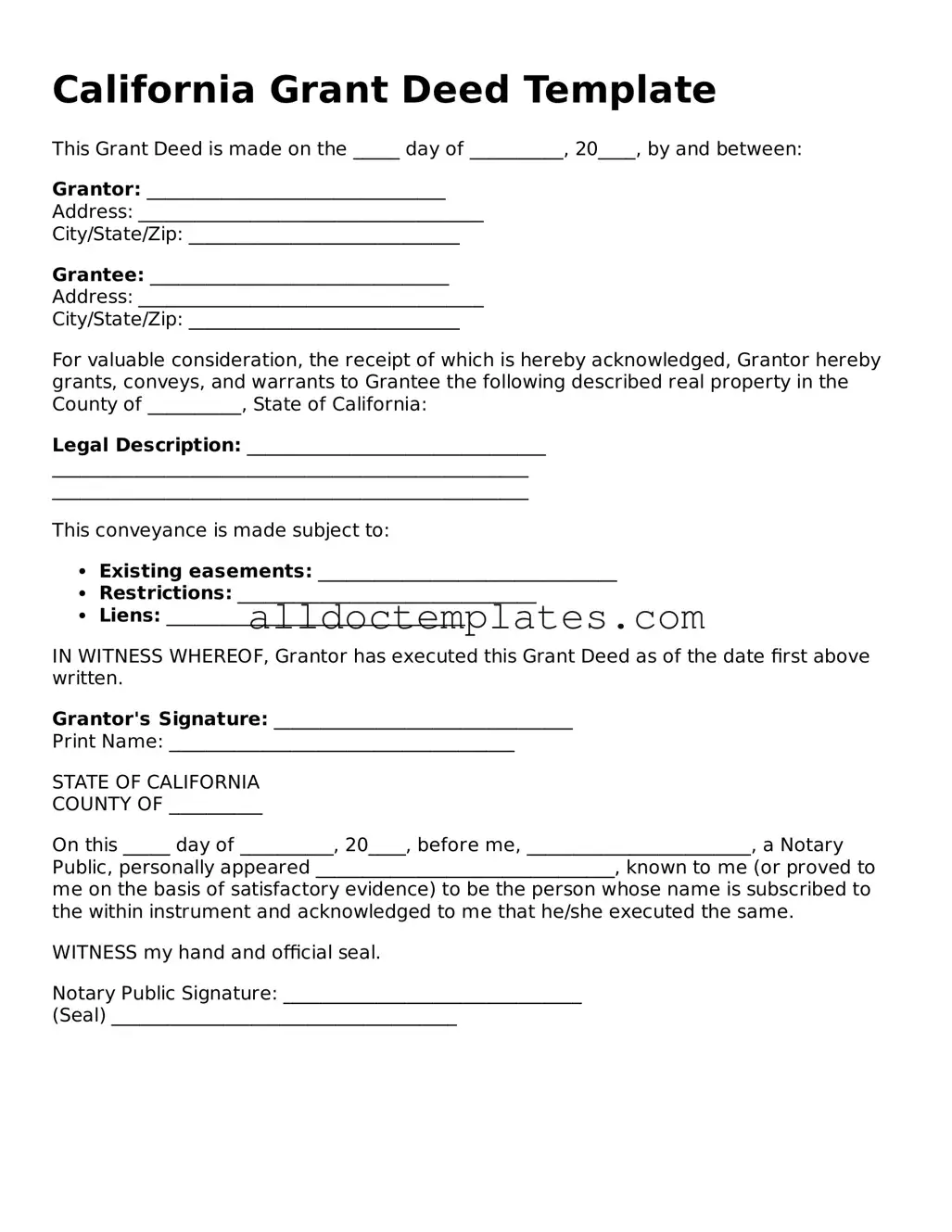California Grant Deed Template
This Grant Deed is made on the _____ day of __________, 20____, by and between:
Grantor: ________________________________
Address: _____________________________________
City/State/Zip: _____________________________
Grantee: ________________________________
Address: _____________________________________
City/State/Zip: _____________________________
For valuable consideration, the receipt of which is hereby acknowledged, Grantor hereby grants, conveys, and warrants to Grantee the following described real property in the County of __________, State of California:
Legal Description: ________________________________
___________________________________________________
___________________________________________________
This conveyance is made subject to:
- Existing easements: ________________________________
- Restrictions: ________________________________
- Liens: ________________________________
IN WITNESS WHEREOF, Grantor has executed this Grant Deed as of the date first above written.
Grantor's Signature: ________________________________
Print Name: _____________________________________
STATE OF CALIFORNIA
COUNTY OF __________
On this _____ day of __________, 20____, before me, ________________________, a Notary Public, personally appeared ________________________________, known to me (or proved to me on the basis of satisfactory evidence) to be the person whose name is subscribed to the within instrument and acknowledged to me that he/she executed the same.
WITNESS my hand and official seal.
Notary Public Signature: ________________________________
(Seal) _____________________________________
